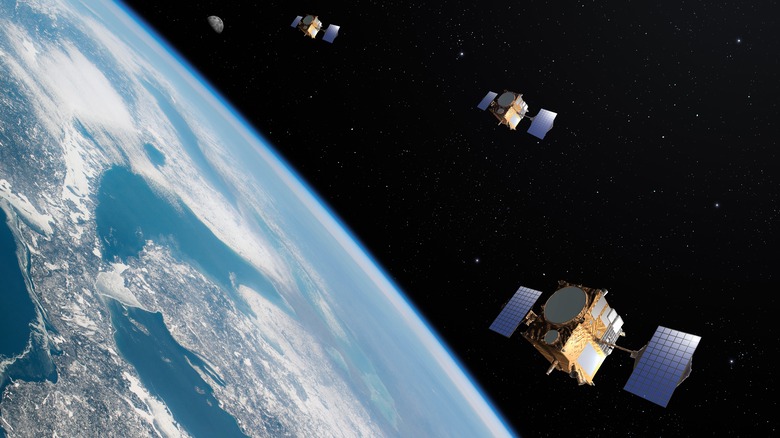This New US Proposal Could Be Bad News For Starlink Satellites
The United States Government Accountability Office (U.S. GAO) wants the U.S. Federal Communications Commission (FCC) to review a special licensing term that allows certain commercial satellites to avoid an assessment of their environmental impact. Take for example SpaceX, which aims to deploy as many as 42,000 Starlink satellites to create an internet-beaming constellation in Low-Earth Orbit. Amazon's Project Kuiper, OneWeb, and TeleSat are other names that will collectively launch hundreds of internet satellites in the near future.
In a nutshell, the number of commercial satellites will only go up, and with it, their negative impact will also multiply. Under the National Environmental Policy Act (NEPA), federal agencies like the FCC are required to conduct an environmental assessment for a commercial proposal before it is granted the license to operate. However, under special conditions, an exclusion is granted regarding the environmental impact side of things. Commercial satellites like those launched by SpaceX for the Starlink network currently enjoy categorical exclusion from the NEPA terms. GAO seeks to challenge that free hand given to the likes of SpaceX.
The agency says the "FCC has not sufficiently documented its decision to apply its categorical exclusion when licensing large constellations of satellites." Changes have been made to the NEPA rules in the past, but the U.S. FCC has reportedly never conducted a periodic review of the special privilege granted to satellite constellations regarding their environmental risks. Last month, the FCC ruled that satellites must return back within five years of completing their mission because it is tired of space junk.
Environmental assessment of satellites on the horizon
Following a study focusing on the federal policy-making processes, the GAO has come up with a trio of recommendations for the U.S. FCC. First, the agency has urged the FCC to analyze and report whether satellite constellations have a significant impact on the environment. Next, the GAO wants the FCC to put in place a robust process for reviewing the exclusions it grants as part of the NEPA rulebook. Finally, the congressional watchdog has asked the FCC to transparently and publicly reveal the factors that are considered when granting an exemption.
As the pace of commercial satellite launches has picked up in the past couple of years, experts have raised alarms about problems like space debris that threatens the ISS and pollution. According to a Nature study published in May 2021, large satellite constellations pose risks such as orbital collision due to satellite parts, aluminum deposition in the atmosphere during debris burnout, night sky pollution, and interference with on-ground telescope observations.
Another Nature study that came out in November 2020 also highlighted the problem of night sky pollution for astronomy due to satellite constellations. Plus, there's always the possibility of Kessler Syndrome (via Space.com), and things going haywire that could potentially litter Earth's orbit with an enormous pile of satellite rubble. The risks of militarization and geopolitical tussles over space sovereignty also can't be ignored. In 2021, the FCC junked a petition for reconsidering the environmental assessment of SpaceX's Starlink constellation, noting that it doesn't pose any risk.

